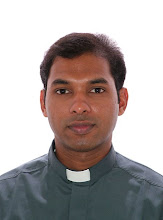 Each nation have their own culture and in other way we can say the culture gives the identity of that nation. The culture is not something that is static to have in possession but a process of growth through the means of education, discipline , training and many other things.
Each nation have their own culture and in other way we can say the culture gives the identity of that nation. The culture is not something that is static to have in possession but a process of growth through the means of education, discipline , training and many other things. If we are making a realistic approach to the Indian culture and the influence that it had by the western culture, I think the effect that she has got is negative more than positive. Because the western and Indian cultures are diametrically opposed. The reason for this is that western culture is based on the principles of materialism, whereas the Indian culture is based on the tenets and principles of spiritualism. Materialism always goes after or stands for worldly possessions, wealth, gaining material things etc., but the spiritualism always stands for moral values, ethics, virtues and the power to distinguish between right and wrong, between right and wrong, between good and evil, between correct and incorrect etc.

But the new generation in India is changed a lot in all the spheres of their life because of the western influence. Now the people especially in the urban area are after liberty and materialism. The people now forget what is their inner real voice want from them to do. Now the tragic is the inner generation wants freedom without any responsibility along with it. I too agree that it is essential to have material possessions in this world but I would say the attainment of worldly possessions overriding morals and ethics and virtues surely will destroy the human being.
We need wealth to make our lives comfortable and to improve our quality of living, but at the same time we must remember that in the process of acquiring the above, we must never lose our power of distinguishing right from wrong, good from evil, and must allow the ecclesiastical to rule over the material. They have no time to meet their fellow brethren, but they have time to visit their psychiatrists in search of mental peace and satisfaction. From the west some people come to India and head for the Himalayas in search of spiritual gurus to attain solace.
Here what I wanted to say is when we adapt something from outside to our own identity we have to be very attentive and we should not lose our own identity to adapt a new one. Because I believe the basic structure of human mind which is constituted also by the culture where one born, can never change by other cultures.








